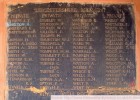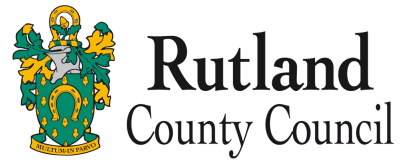Arthur Shelton
View Arthur on the Commonwealth War Graves Commission website
Known information
Arthur Shelton was a career soldier. He was born in Eaton in Lincolnshire where he lived until he enlisted in the 2nd Battalion Leicestershire Regiment in 1904. In 1906 he went out to India and served there for nearly seven years, returning to England and civilian life in February 1912. He married in April 1914, and shortly afterwards moved to Uppingham as a postman, where he was working when the war broke out. As a reservist, he rejoined his battalion and went to France in September, taking part in the battles of the Aisne and Marne. In October he was wounded in the left hand at Armentieres, and went initially to Cambridge Hospital for treatment. After four or five weeks at Portsmouth Alexandra Hospital it was decided to amputate one finger. He went to France again on 7 October 1915 with a draft of reinforcements. A month later, Arthur, now promoted to Lance Corporal, sailed for Eygpt and onwards to Mesopotamia [Iraq]. The Leicestershires formed part of Tigris Corps which had been ordered to march towards Kut-el-Amarrah and rescue a trapped British army which had set out to capture Baghdad but was now besieged by Ottoman forces. From the start, Tigris Corps met fierce resistance from the Turks and suffered heavy casualties in the Battle of Sheik Sa'ad on 6/7 January. A week later it was in action again. The Turks were discovered near the Wadi river and an attack was organised. At 3.30pm the British advanced under heavy Ottoman fire. The battalion war diary records: "Ammunition was brought up and the battalion prepared for the assault. At this stage the right flank of the battalion was subjected to enfilade machine gun and rifle fire. The assault was not carried out and the battalion dug themselves in with both flanks thrown back." In this short engagement, the Leicestershires suffered losses of three officers and 197 men killed, wounded and missing. Arthur was one of these. A sad note in the war diary on 18 January records how parties were sent out to recover British dead who had been buried but whose bodies had been dug up and stripped of clothing by Arab tribesmen. Arthur's grave was subsequently lost or destroyed and so he is commemorated on Panel 12 of the Basra Memorial in Iraq and on Uppingham's war memorial. Another Rutland soldier, Walter Hinch, died in the same action. During his period of service in India, Arthur was a member of the winning team in the physical drill competition of the 6th Poonah Division (1908), a member of the winning team of the lightweight tug-of-war contest for two successive years, and was in the final for the championship. He also gained a prize in a six mile race, in which about 200 competitors started, and he was an expert dumb bell operator and weightlifter. The Officer who signed his discharge, after mentioning some of his good qualities, added: "He was perhaps the strongest man in the battalion." Arthur left two children, Arthur Aisne and Janet.

|
Do you know something about Arthur that hasn't been mentioned? You can add any new information and images as a contribution at the bottom of this page. |










.png)


.jpg)





Please wait